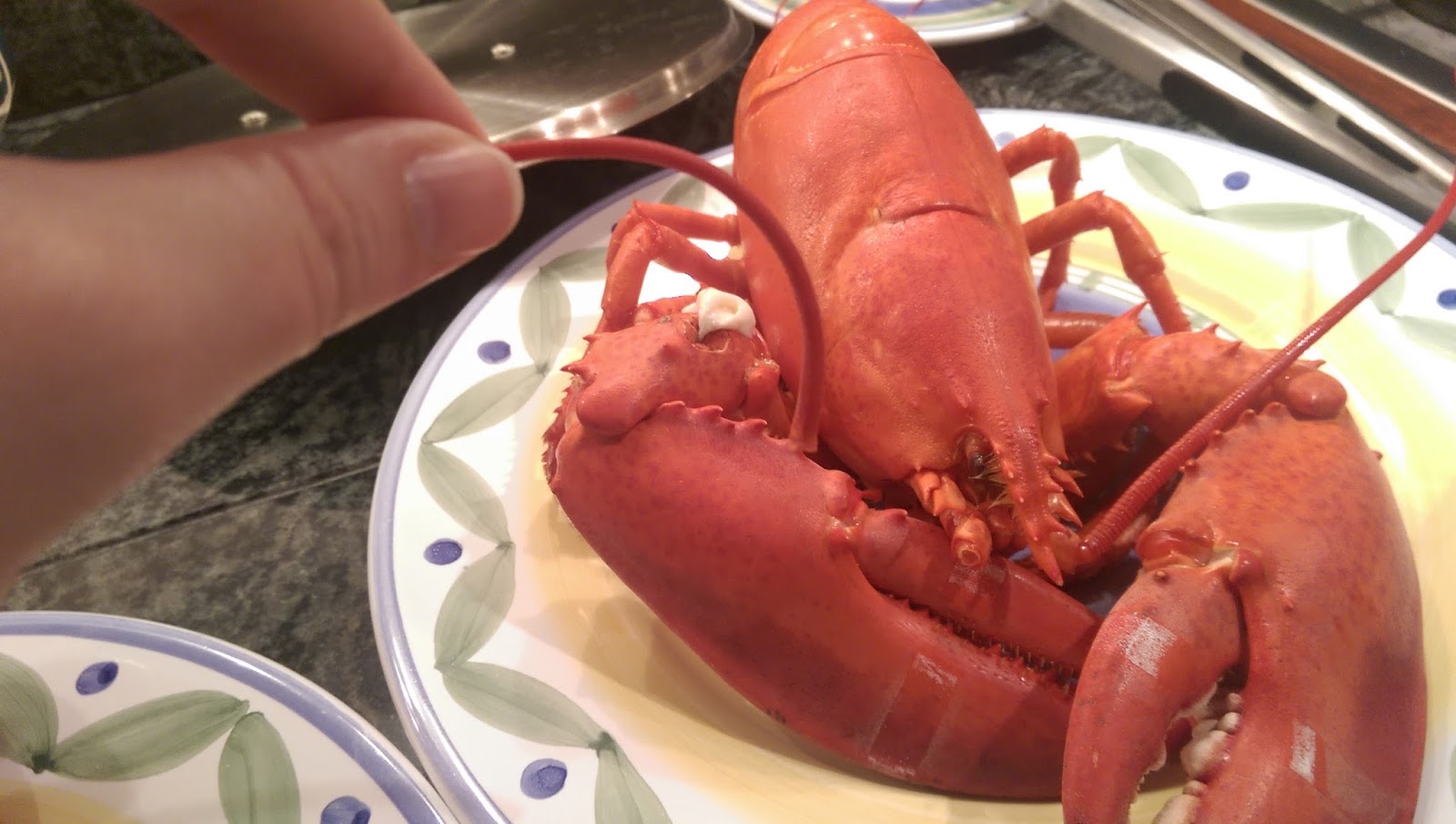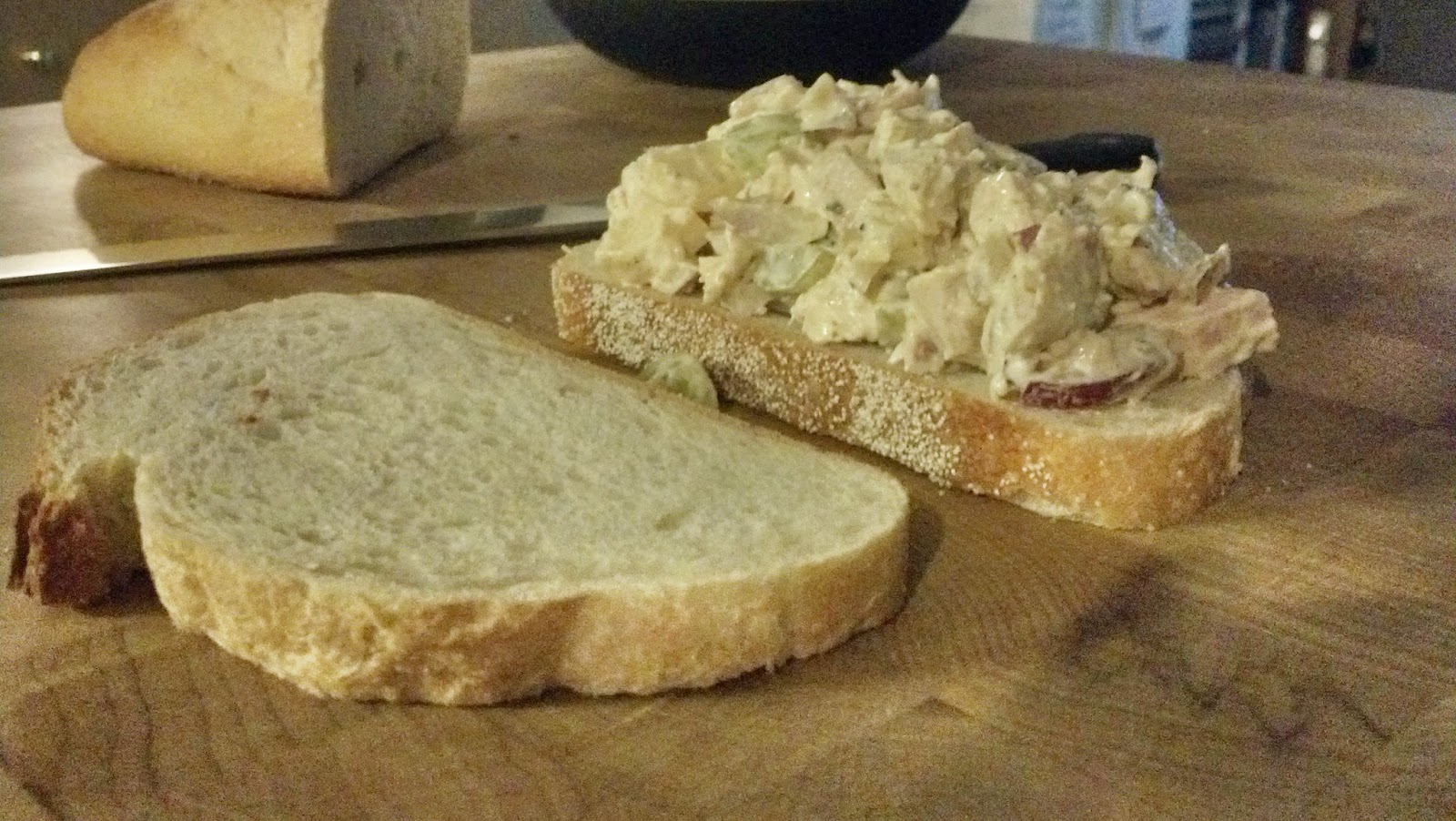Our preferred size lobster is between 1.5 lbs and 2 lbs (or to be entirely accurate, however much over 1.5 lbs the seafood salesman will give us before charging us the 2 lbs. lobster rate). Larger lobsters do not automatically mean better meat. The real 20 lbs. giants that they raffle off in stores actually tend to have tougher meat. Lobsters shed their shells, and at certain parts of the years their shells are softer and thinner than others. These soft-shelled lobsters are significantly easier to crack, barely needing the cracker at times. Still, the softer the shell is, the newer it is, and the more room to grow the lobster has. This means the lobster will have more water weight and less meat inside, so you might want to consider a slightly larger lobster. These particular lobsters were the more common hard-shells.
The generally most anticipated part of having lobster is the killing of the lobster. Now, I think of lobsters as mutant sea bugs, so I have very little pity for them. But no one wants to make anyone suffer. We like to sedate the lobsters a little bit. We store them with wet paper towels on top in the fridge before we're ready, and then remove them one at a time and drop them in the pot. Sometimes, the fridge will be enough to make them mellow, but for particularly feisty lobsters, we put them in the freezer for about half an hour or less to sedate them. We try to minimize the time between when they are out of the fridge and when they are in the water. We submerge them completely, and feel that that is more humane than dragging it out by knifing them in the skull beforehand, though some do choose to do so.
Boiled Whole Maine Lobsters
lobsterssea salt
butter (1/4 cup per lobster)
lemon juice (1/2 lemon per lobster)
Boiling Time For Lobsters:
1 lbs lobsters: 8-10 minutes
1.5 lbs lobsters: 12-15 minutes
2 lbs lobsters: 15-18 minutes
 |
| When you can pop the antennae off, your lobster is done. |
- In the largest pot you can find with a tight-fitting lid, add 3 quarts of water for each lobster you want to boil, filling the pot about 2/3rd to 3/4 of the way full.
- Add generous amounts of sea salt (approx. 3 tablespoons per quart) to water and bring to a healthy boil. You are trying to mimic seawater.
- Remove your lobsters from the fridge one at a time and quickly dunk them head first into the boiling water. Make sure to remove the rubber bands before dropping them in the water as the rubber in the bands can actually change the taste of the boiling liquid. Don't worry, and don't drag it out. The lobster won't get you.
- Boil your lobsters for the necessary time depending on what size lobsters you have. (See above)
- The easiest way to tell if your lobster is done is to pull at one of its antennae. When it is fully cooked, it should pop-off in your hand with little to no resistance.
- Remove lobsters from pot and allow to rest and cool for at least five minutes.
- Melt butter in individual ramekins.
- Add lemon juice to the butter.
- Serve with lobsters, shell crackers, and a bowl for discarded shells.Remember this is not a race to see who can finish their lobster first.






